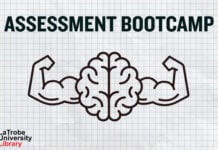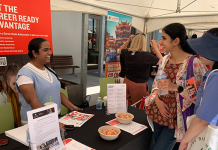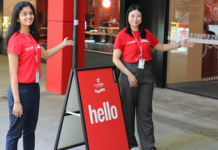The content of this article has been edited and was first published by our partners at Prosple. For all the tips and tricks, read the full article.
1. Learn as much as you can about the event beforehand
If you’re planning to network at a careers fair, consider the following:
- Who is hosting the event? For example, if you’re attending the annual AECOM Woman’s Path Forward networking event, it could be helpful to learn a little about what AECOM does, and how it has promoted gender diversity in the past.
- Will there be speakers at the event? Often, networking functions feature a guest speaker who addresses a topic of importance to participants. Researching who the speaker is can prepare you to ask any questions you might have or, better yet, give you something to share with other attendees (e.g. ‘Apparently he’s written a book about recruitment. Have you read it?’)
- Know the dress code. This one is self-explanatory: don’t be the only person in a suit, and don’t be the only person not in a suit.
- Who else will be there? Make a list of the people you’d like to meet. If, say, the networking event takes place in conjunction with a careers fair, you might write down the employers that interest you most and make a point of seeking them out. You can even reach out to individual attendees (if the information is publicly available) to introduce yourself and let them know that you’re attending the same event and interested in meeting them.
Arrive with a clear idea of what you’d like to achieve—this will help you to focus on the important stuff, which, in turn, can give you a confidence-boosting sense of purpose.
2. Strike a balance between expanding your network and consolidating it
The people you meet at a networking event will fall into two categories: those you’ve met before and those whom you’re meeting for the first time. Ideally, you should strike a balance between the two, using the event as an opportunity to reconnect with familiar faces (especially if there are people you recognise but haven’t yet gotten to know very well), while also seeking out brand new connections.
If anything, your emphasis should be on the latter: reconnect briefly and, if appropriate (or desirable), share details that will allow you to catch up in the future. Then focus on expanding your social and professional circles, which is, ultimately, the purpose of a networking event.
What you generally don’t want to do is spend the event exclusively in the company of people that you know well already: there’s a good chance that you’ll miss an opportunity to make a valuable new connection, something that it’s much easier to do at a dedicated event than in the workplace.
3. Introduce yourself with confidence
Confidence is the sum of preparation and practice: by giving some thought to how you’ll approach conversations at a networking event, you’ll build (or bolster) the secure belief that you can rely on yourself, even if, at first, the thought of greeting strangers gives you butterflies in your stomach. Understand that everybody experiences self-doubt from time to time, even beacons of self-esteem who appear to treat networking events like social all-you-can-eat buffets.
To help you push through it, let’s focus on your introduction—if you can get past that, then you may discover that you’re participating in a conversation just like any other. Here are five tips to help you build an opener that leads to a fruitful and enjoyable interaction:
- Keep it simple.
- Be specific.
- Build a rapport by discussing a topic of interest.
- You don’t need to ‘sell’ yourself.
- Relax.
4. Brush up on your conversational skills
- Remember that the aim of a conversation is to foster communication. In other words, what you say (the conversation) should lead to establishment of a dialogue in which both (or all) parties have a chance to make meaningful contributions and learn from each other (communication).
- Avoid the overuse of close-ended questions. These include true-false/yes-no question (e.g. ‘are you an accountant?’) and questions that require only a one- or two-word reply (e.g. ‘Where did you study?’).
- Prioritize open-ended questions. These questions ask for explanations and elaborations, while demonstrating your interest in what other people have to say. For example, you could ask ‘What motivated you to major in chemistry?’ or ‘What sort of work do you do in that department?’.
- Listen actively. This means that you should make eye contact with your conversational partner and give them your full attention. Active listening involves demonstrating your engagement by asking open-ended questions.
- Stay positive. Aim to create an interaction that leaves both (or all) parties feeling better than they did when it started. This doesn’t mean that you have to be witty or impressive or showy: only that you focus on the silver lining and avoid criticism of yourself, the other person, or the event.
- End conversations politely. To do so, simply reverse your introduction. Wait for an appropriate lull in the conversation, then issue a polite exit line, such as:
‘It’s been really great meeting you, but I want to ask the speaker/a colleague some questions before he/she leaves.’
‘Well, I want to make sure to say hello to at least three people tonight!’
‘Anyway, I don’t want to take up all of your time.’
You can then thank your conversational partner in a specific way: ‘Thanks for sharing your experiences as a graduate engineer. You’ve helped me answer some important questions’ or ‘I appreciate your telling me more about life within a law firm.’ Then shake hands, and, with conviction, depart to do the thing you said you were going to do.
5. Remember to follow up on new connections in a consistent way
At the end of a conversation, you may decide to swap details with the other party. Ideally, you should aim to be the type of person who collects details instead of giving them away, which gives you the option of following up later. However, with that option comes a responsibility: it’s on you to make sure that you do reconnect with people you’d like to stay in touch with. To make this easier, it’s a good idea to adopt a consistent approach.
For example, you could reach out to people on an appropriate social media platform (i.e. LinkedIn) or send a short message to their email address. Be sure to thank them for their time, reiterate that you enjoyed meeting them, and keep the conversation going by asking any outstanding questions, suggesting a time to meet up, or sharing anything your promised to deliver (for example, an interesting article you mentioned during your conversation).
Alternatively, if you want to consolidate the connection without taking things further immediately, you can keep your message short and sweet: ‘Hi Jane, It was great meeting you at the graduate networking event on Sunday. Best of luck with the next stage of your CPA!’














